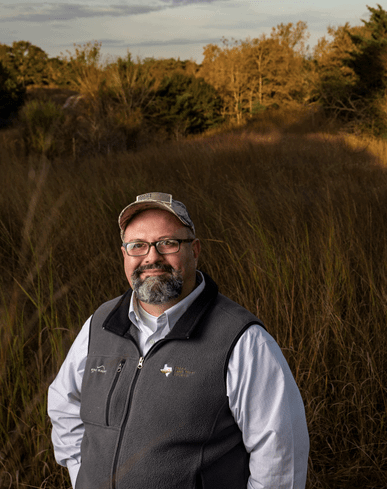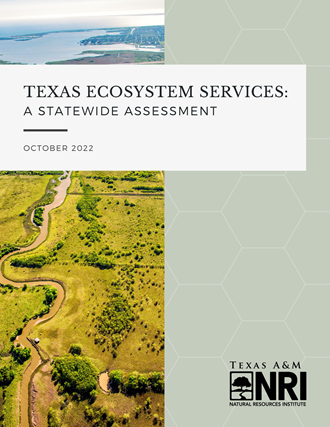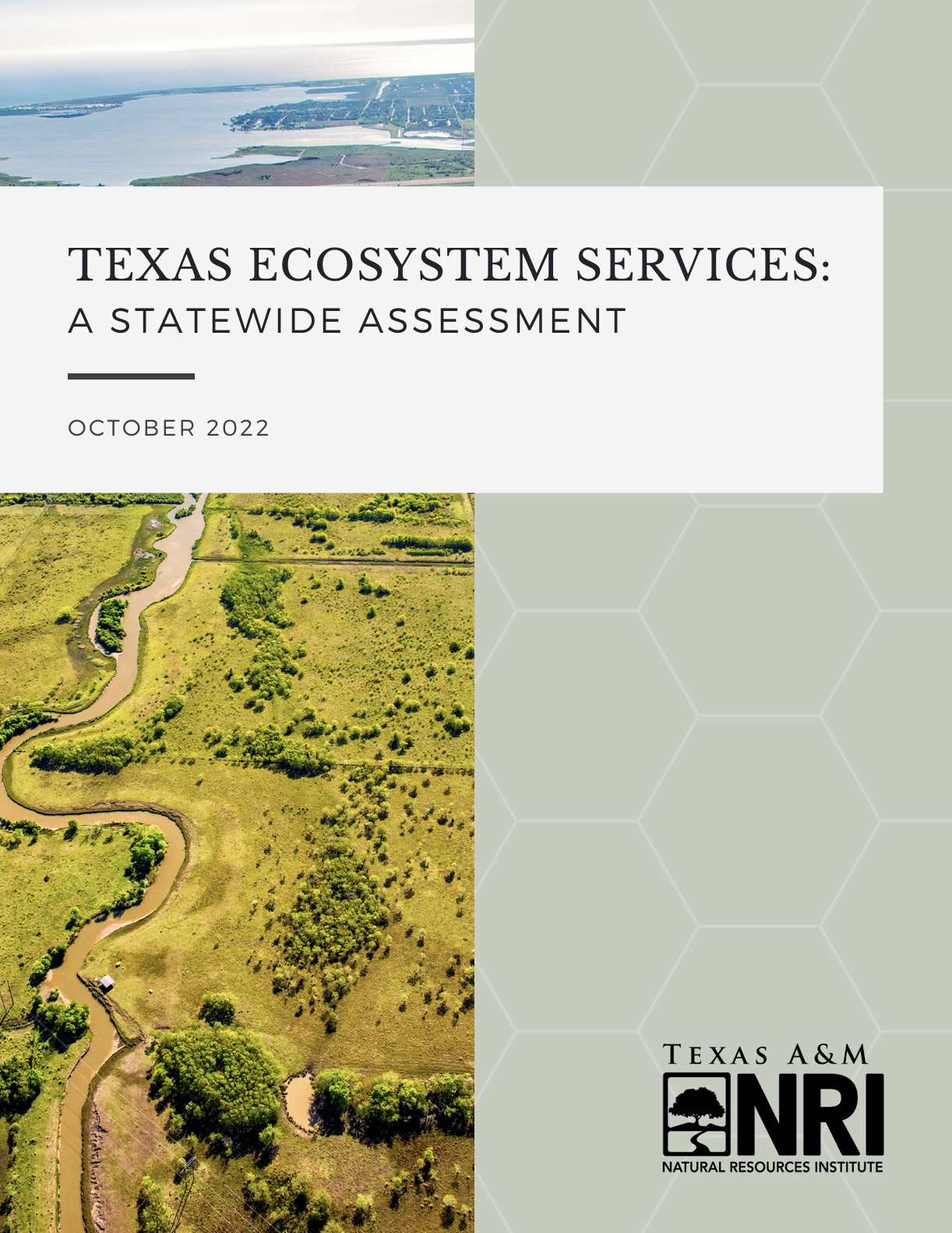q&a+water: Roel Lopez
In this issue’s Q&A, Texas+Water Editor-in-Chief, Dr. Todd Votteler, interviews Dr. Roel Lopez, Director of the Texas A&M Natural Resources Institute and Department Head for the Department of Rangeland, Wildlife and Fisheries Management at Texas A&M University.
Dr. Lopez has over 25 years of experience in natural resource and land management with academia, federal and state agencies, and private industry. As a researcher and teacher, he has authored >175 journal articles and book chapters and has chaired over 100 graduate students. He served as Special Assistant to the Deputy Under Secretary of Defense-Installation and Environment and continues to work with the Department of Defense on various national and regional natural resource and environmental issues. His research focuses on endangered and fragmented wildlife populations, the sustainability of military lands, and rural land trends and demographics.

What is the mission of the Department of Rangeland, Wildlife and Fisheries Management?
The Department of Rangeland, Wildlife and Fisheries Management (the Department) was established following a re-organization a few years ago. The purpose of the re-organization was to make the Department more applied and focused on key issues in the state regarding natural resources. It was a natural fit to integrate the disciplines of Rangeland, Wildlife, and Fisheries, because they often interact in terms of land and management activities and associated challenges or issues. In the last year, the Department has hired nearly a dozen new faculty and has re-focused the curriculum and research efforts to address these important areas of need. It’s an exciting time for the Department to serve the citizens of the state in fulfilling our Land Grant mission.
What are some of the water-focused programs within the Department?
As mentioned, the Department focuses on the stewardship of natural resources surrounding rangelands, native wildlife populations and their habitat, and fisheries/aquatic resources. Within this space, land management strategies that impact water capture and conservation are obviously closely tied to land stewardship. Good stewardship practices that improve infiltration, water quality, and water quantity are all key focus areas of the department. The Department faculty also work directly in conserving and improving water resources, ranging from Texas fisheries in both public and private waters, endangered species such as freshwater mussels, and other land use strategies (e.g., brush control) improving the overall availability of water supplies, both in terms of quantity and quality.
A recent report you coauthored found that land conservation supports numerous economic benefits for Texas while enhancing our water resources. How is land conservation enhancing our water resources, and can those benefits be quantified?

Click here to read the full report.
The Texas Ecosystem Services report’s intent was to quantify the ecological benefits of land and the stewardship of natural resources. This is a very challenging thing to do. We already know that land use activities can impact water resources in either a positive or negative way. Our attempt in the report was to demonstrate the value of land conservation and land stewardship regarding broad ecological benefits, often referred to as “ecosystem services,” that provide benefits ranging from clean air, recreational opportunities, and of course water resources. The value of private land conservation, specifically in improving and/or enhancing water resources, is better understood and developed compared to other ecosystem services. However, there are still many unknowns regarding the direct relationship of a given practice to the realized benefit in terms of water yields. Despite these challenges, we are working to better understand these relationships to inform conservation strategies and also inform potential water markets. As you know, water is a critical resource. Understanding those relationships can incentivize private landowners and the public to protect and conserving these resources in the future.
What is land fragmentation, and is it increasing or decreasing in Texas, and does it impact our water resources?
From our Texas Land Trends program, land fragmentation is the breakup of rural land or open space. The trend in our state is the continued break up of farms, ranches, and family forests, collectively known as working lands, into smaller parcels and the eventual conversion of those parcels into non-agricultural use. The issue facing our state is to better understand the consequences of losing a parcel of land. Each day, we lose approximately a section of land or a square mile. The loss of that land to non-agricultural use, by our estimates, can impact the ability to recharge 91 water towers over a year. That’s significant. Open space or rural land is like a sponge – they capture water, filling our aquifers and streams. Good stewardship of private lands captures an important ecological function that benefits us all. Fragmentation is increasing in the state and ultimately, this will impact our water resources in two ways. First, land fragmentation is due primarily to increasing human populations. This translates into greater dependence on and use of water resources (e.g., increased water wells). That means there are more “straws” in the ground impacting our water resources. Second, as previously mentioned, the conversion of open space typically results in a loss of water resources due to decreased infiltration and increased runoff. So in the long-term, land conservation of working lands benefits to the state’s citizens.
What do you think are the most significant challenges related to aquatic ecosystems in Texas?
The most important challenge to our aquatic ecosystems is increasing human populations. For the last several years, we have projected a shortfall of water for our state. These projections are only expected to increase. Currently, we are at about 30 million Texans. In the next 25 to 30 years, we expect our state’s population to nearly double. It’s fair to say that our state’s number one natural resource challenge will be water supply.
What Texas river basins do you think are likely to encounter significant future challenges between water management and the need to preserve aquatic ecosystems?
When you look at the state, increases in human populations are mostly centered or anchored near current urban centers. If you could imagine a triangle between Dallas-Fort Worth, San Antonio/Austin, and Houston, this region is often times referred to as the Texas triangle. River basins that bisect that region of the state will likely phase significant water challenges in the next few years. It’s already happening now in many parts of that region. This will be something that we will collectively have to address here soon.

What do you think are the greatest water challenges facing Texas over the next 20 years?
The greatest challenge facing Texas over the next 20 years will be the shortage of water. An increasing human population coupled with a loss of working land is a significant issue that will require our attention. The conservation of open space is an important first step to ensure the protection of our ability to conserve water. Years ago, former President Lyndon B. Johnson said that conservation starts where the first raindrop falls. In Texas, 83% of the rain falls on farms and ranches. Maintaining this “land infrastructure” is critical to maintaining our ability to capture, conserve, and maintain water supplies. Whether you live in a city or an urban center, water is important to all of us in conserving this precious resource, and efforts to conserve and sustain those resources should begin now.
Read the original q&a+water article here.



